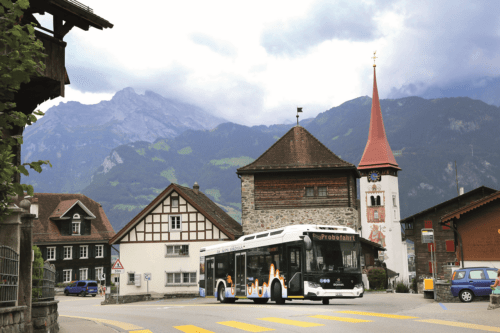
Jonathan Welch takes a look at Scania’s European city bus range, the Citywide, and gets behind the wheel of the latest battery-electric version
Regular readers will remember that in late 2022, I paid a visit to Switzerland to look at some of the infrastructure projects carried out by Swiss company Furrer+Frey, a specialist in road, rail and tramway overhead lines and which is expanding its presence in the e-bus charging sector. I was invited to view installations of its all-in-one charging station in Brugg, and on a visit to Baden-Wettingen operator RVBW its ‘ZFP’ zero footprint overhead-mounted option. Both visits introduced me to a type of vehicle unfamiliar in the UK marketplace, the Scania Citywide, or more precisely in this case, the battery-electric Citywide BEV.
Whilst in the country, I was given the opportunity by Scania to try out a Citywide for myself. Before we get behind the wheel, though, let’s take a moment to look at the history of the model, which has been around in various forms on the European market for over a decade.
Model history
The current generation Citywide was unveiled by Scania at Busworld Europe in Brussels in 2019. The range was led by the battery electric version, but encompassed buses offering a variety of fuel types. “The new Scania Citywide range features lower fuel consumption, higher passenger capacity, better driveability, and vastly improved passenger and driver comfort,” said Scania Head of Buses Anna Carmo e Silva at its launch, adding: “Our guiding light has been to design a bus for more space, light and cleanliness. To reverse global warming, it is crucial that buses offer all the comforts needed to convince more people to switch to public transport.”
[…]By subscribing you will benefit from:
- Operator & Supplier Profiles
- Face-to-Face Interviews
- Lastest News
- Test Drives and Reviews
- Legal Updates
- Route Focus
- Industry Insider Opinions
- Passenger Perspective
- Vehicle Launches
- and much more!


